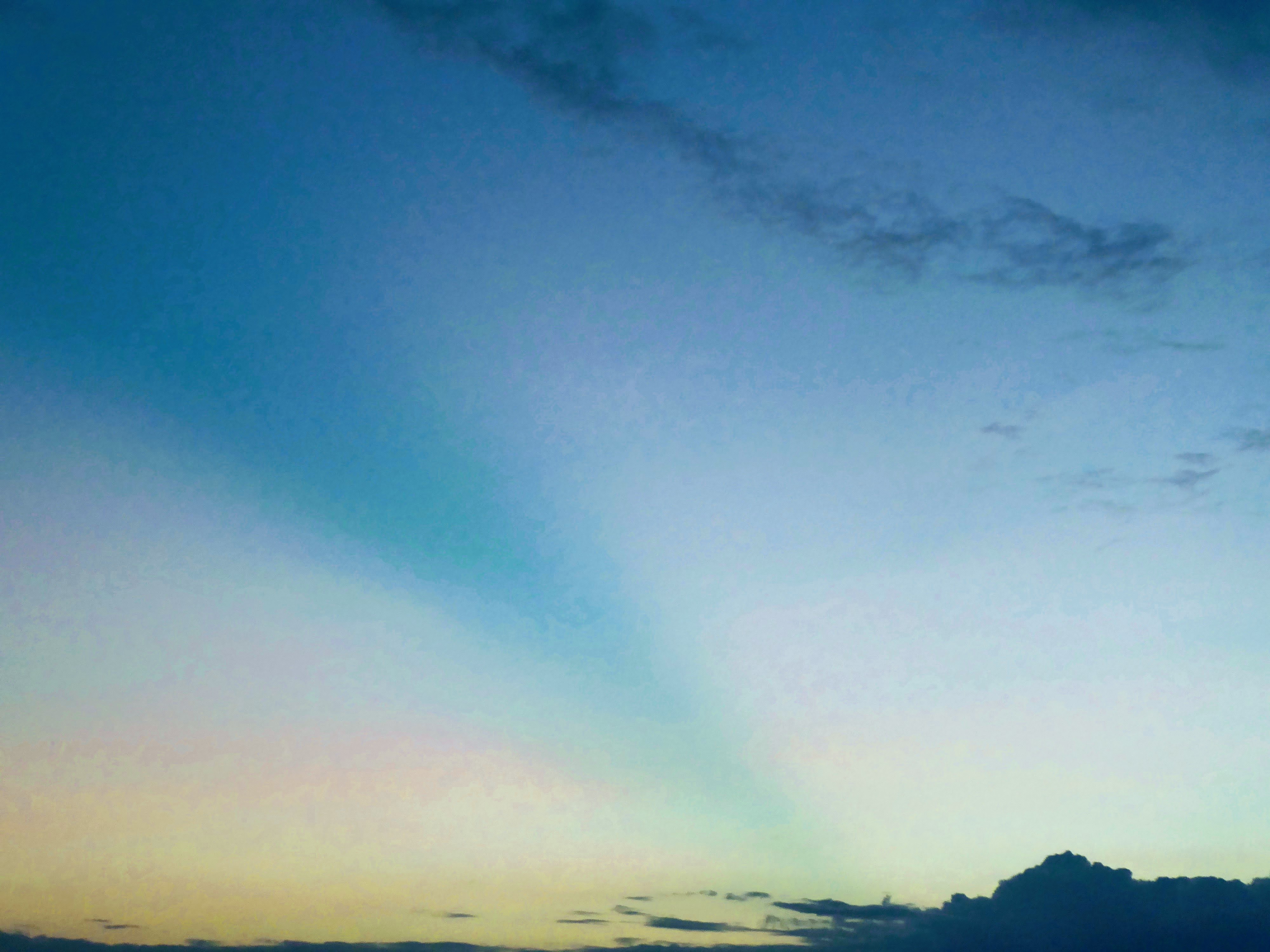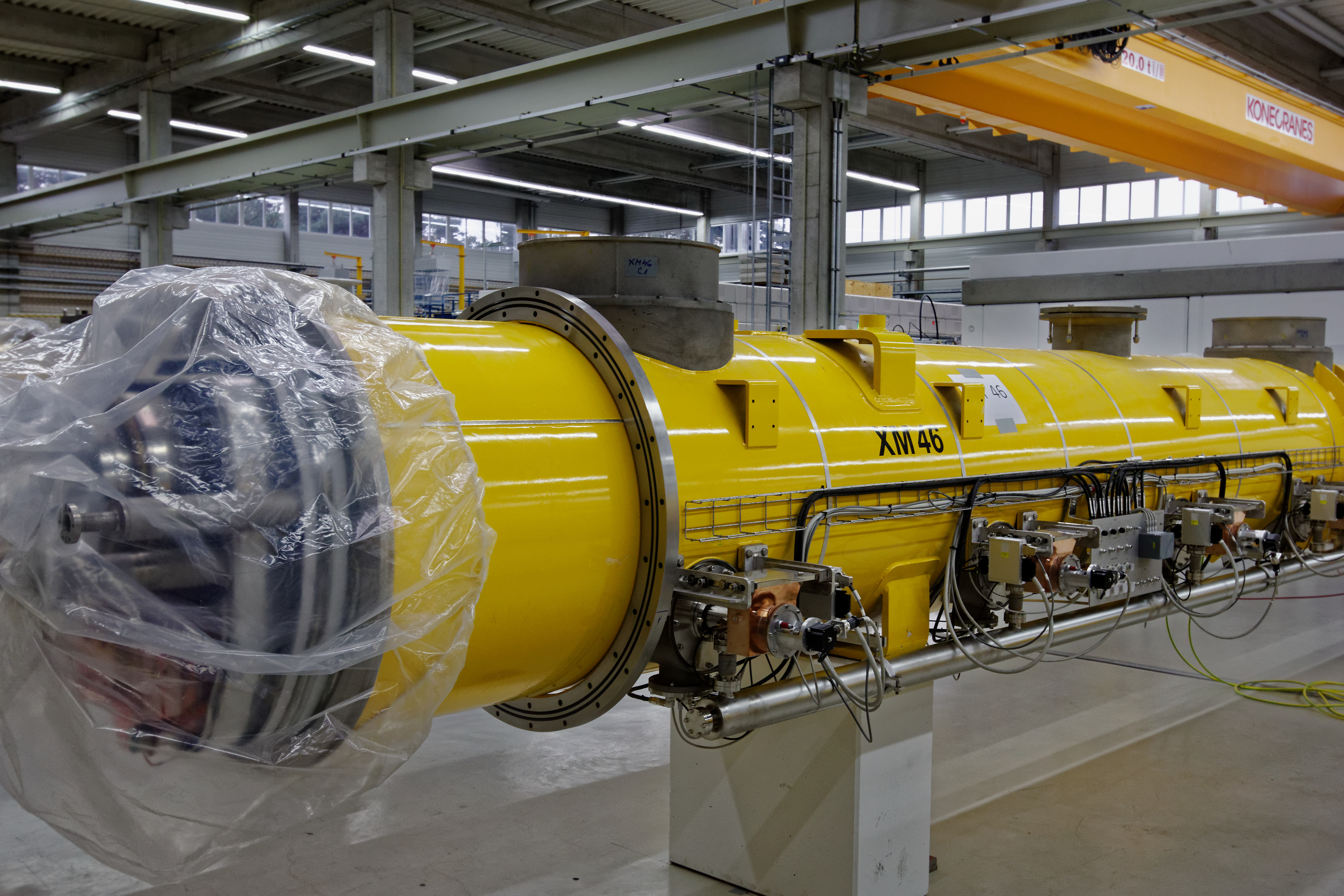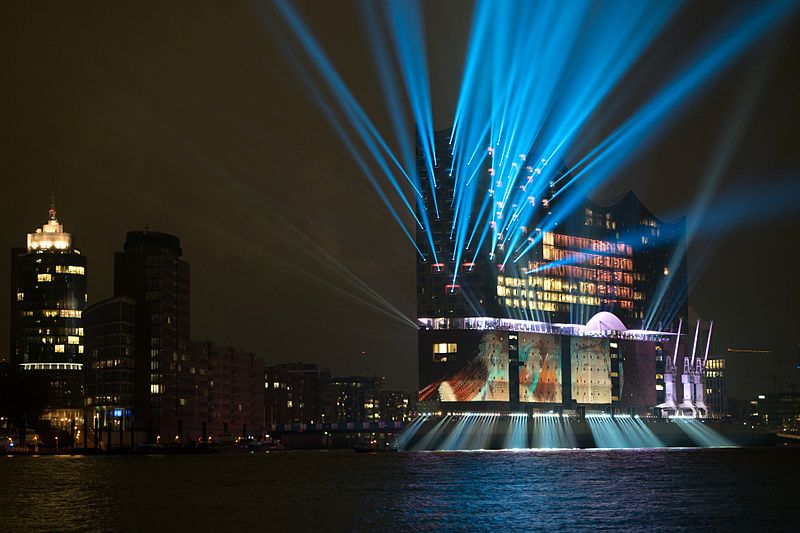
September 8, 2017, by Brigitte Nerlich
Making lasers public: The European X-ray Free Electron Laser
Last weekend, my mum phoned me from Germany to tell me about the new x-ray laser inaugurated in Hamburg (as I later learned this is the European X-ray Free Electron Laser or XFEL) and asked me whether I had heard about it and whether I could explain what it did. I hadn’t and I couldn’t.
After that phone call I read about this new laser facility in an article published in The Guardian by Hannah Devlin and started to dig a bit deeper. In the following, I’ll first provide some basic information about the laser and then go on to tell the story about how different types of lasers were used to make this big laser public – through ‘light art’.
Seeing with light
Where: “The 3.4 km long tunnel for the European XFEL housing the superconducting linear accelerator and photon beamlines runs 6 to 38 m underground from the site of the DESY research center in Hamburg to the town of Schenefeld in Schleswig-Holstein, where the experimental stations, laboratories and administrative buildings are located.” (Wikipedia)
When: It was funded in 2009 and opened on 1 September 2017. Here is the inauguration photo.
What: “XFELs are like a cross between an X-ray microscope and a laser. They work by producing very intense pulses of light at an astonishingly fast rate – we’re talking between hundreds and tens of thousands of light pulses each second.” (more info here) “The peak brilliance of the European XFEL is billions of times higher than that of conventional x-ray light sources; the average brilliance is 10,000 times higher. The higher electron energy allows the production of shorter wavelengths. The duration of the light pulses can be less than 100 femtoseconds.” (Wikipedia) That’s why some call the XFEL the “Buzz light femtosecond”.
Why: This “uber-laser” is like a camera and a microscope at the same time. “This allows scientists to study matter in intense detail and observe reactions that take place in just a fraction of a second, opening up a whole new world of atomic-level exploration.” Scientist will be able to see the complexity of atoms, chemical bonds, molecules, viruses, cells and so on in action, so to speak. There is hope that this will shed light (!) on how plants convert light into energy, or ‘How Molecules Make Energy from Light’, which, might lead to improvements in energy efficiency. There are also hopes for improvements in healthcare. Imaging the structure and behaviour of biomolecules, for example, could help understand the emergence of disease and lead to new medicines and therapies.
Who: “Ten European countries and Russia pitched in with cash and/or resources, and Britain has pledged to join the consortium soon. Existing members include Denmark, France, Germany, Hungary, Italy, Poland, Russia, Slovakia, Spain, Sweden and Switzerland.” (see here and in most of the reporting) This highlights yet again the international, European and global nature of science. I wonder whether, given Brexit, Britain will still join…
If you want to know more, here is an interview with Professor Robert Feidenhans’l, the project’s managing director recorded by Radio Sputnik; and here is a video about the laser from ZDF Heute Journal. Philip Ball has also summarised things nicely here.
Headlines and laser lines
As you can imagine, my mother would not have read all the (English) articles I used to extract the information I presented above. She probably stumbled across a short notice in the local paper and and saw some announcements on TV. However, if she had looked further afield, she’d have found headlines like this in the German press: “So macht der weltstärkste Röntgenlaser in Hamburg Unsichtbares sichtbar” (This is how the world’s strongest X-ray laser in Hamburg makes the invisible visible) (Wired, Germany) or “Der beste Laser der Welt” (The best laser in the world) (Zeit), “Der stärkste Röntgenlaser” (The strongest X-ray laser) (Welt am Sonntag) or even “Die teuerste Lupe der Welt” (The most expensive magnifier in the world) (Hamburger Morgenpost)…
When browsing through the German headlines, I came across some that were quite intriguing and made me curious, as they established a link between art and science. Here are some: “Hamburger Elbphilharmonie grüßt Röntgenlaser XFEL” (The Elbe philharmonic hall sends greeting to the X-ray laser XFEL) (Der Spiegel); “Elbphilharmonie der Forschung” (Elbe Philharmonic Hall of research) (Deutsche Presse Agentur); “Elbphilharmonie der Teilchen” (Elbe Philharmonic Hall of particles) (Die Welt, Hamburg) and in one English piece: “Elbphilharmonie of science”. These headlines seemed to say that the XFEL is to science as the philharmonic hall is to music or art. A nice analogy. When the XFEL was inaugurated this analogy was put into action. But what is the Elbphilharmonie?
Some years ago, I went to Hamburg to participate in a climate change conference and Martin Döring, an old friend and colleague who works in Hamburg, organised a tour of the port. I remember passing a very impressive half-built building jutting out into the Elbe. This was the Elbphilharmonie, “one of the largest and most acoustically advanced concert halls in the world. It is popularly nicknamed Elphi. The new glassy construction resembles a hoisted sail, water wave or quartz crystal” (Wikipedia). The concert hall was inaugurated in January 2017. As you can see below, this event involved a bit of a light show.
When the XFEL was inaugurated in September 2017, the inhabitants of Hamburg were able to enjoy yet another light show or laser installation, created by the light artist Michael Batz. This is what happened: “A series of laser beams crisscrossed the skies over Hamburg to mark the launch of the world’s biggest x-ray laser, co-financed by Russia. […] […] 10 green laser beams […] lit up the sky from Hamburg to the nearby town of Schenefeld, while the words ‘Welcome European XFEL’ projected onto a warehouse next to Hamburg’s new concert hall, the Elbphilharmonie. The elaborate light display, which could be seen from 24 kilometers away, marked the underground path of the world’s biggest X-ray laser, the European XFEL”.
Here are some great photos of this light installation for you to enjoy.
Science et lumière
This is certainly a great way to make science public (although there were some complaints about light pollution)! Light has always been used in science communication, especially during its early and most enthusiastic period, when natural light phenomena were joined by electric light.
Looking at the ‘green rays’ crisscrossing the Hamburg sky reminded me of one of the lesser-known novels by one of the pioneers of science communication and of the use of light in science communication, namely Jules Verne. This is the novel Le Rayon Vert published in 1882. The title refers to an optical phenomenon, green rays, which can sometimes be seen just before sunset or after sunrise (see featured image, I think).
As the photos of the green rays that spread over Hamburg are still under copyright, I’ll leave you with the (not so) green rays of Jules Verne’s novel (the illustrator was Léon Benett) – you have to use a bit of imagination.
PS Some more recent information about what’s going on at XFEL
Featured image: Photo taken out of a bus at sunset, 27 August, 2017 (slightly enhanced ‘green ray’). All other images no usage restrictions, Google images.
No comments yet, fill out a comment to be the first




Leave a Reply